The first thing that greeted me when I had stepped into the lab, for a demonstration on how the Totobobo face mask worked, was a small microscope with a circular piece of white fibrous filter sitting in the centre of it. Viewing this fibre through the microscope viewer, I could see plenty of gaps, connected together in the form of a 3D matrix structure. And in between those gaps, had been black particles of varying sizes, trapped within.
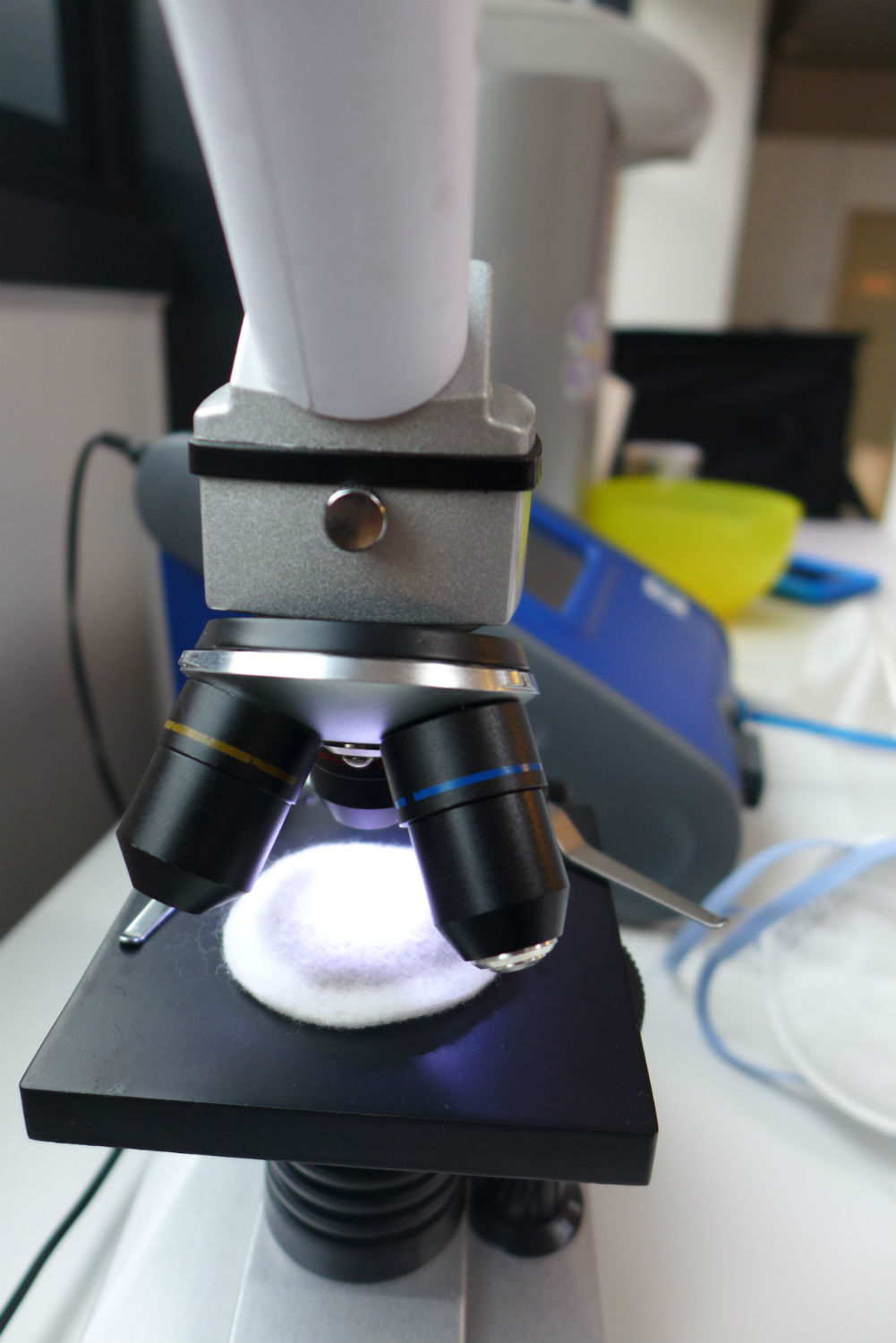
Checking mask’s filter through the microscope.
This, according to Francis Chu, avid cyclist and the Singapore inventor and designer of an anti-pollution mask, was essentially how his creation, the Totobobo mask, works. Said Chu, “At this microscopic level, you see the little black dots attached to the fibre. They are arrested by the electrostatic forces on the fibre. This is a similar type of force as rubbing a plastic ruler on your hair and attracting some charges, but of course this one is a lot stronger and it can last for a few years.”
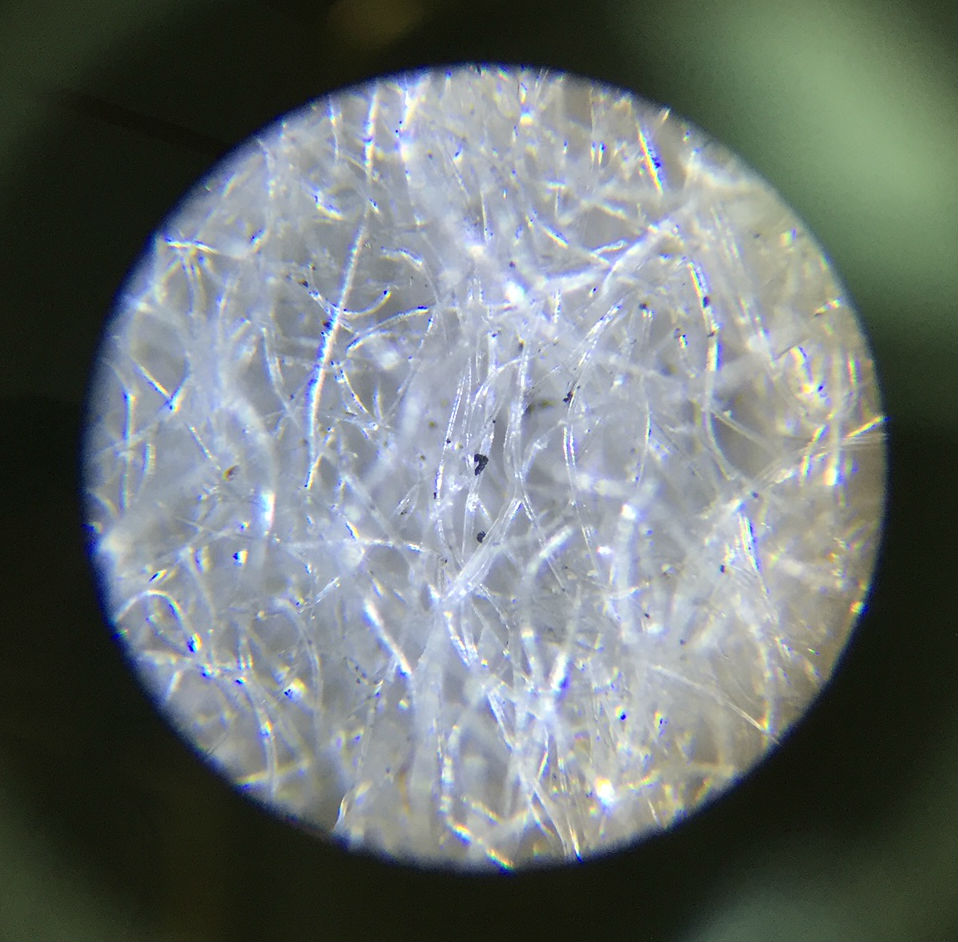
The particles as seen through the microscope.
A comfortable mask
Marketed as a safe and easy way to keep the air pollution out of your lungs, the Totobobo mask, with its pair of circular white fibrous filters attached, can filter out many different types of pollution particles, ranging from haze particles to harmful fumes from vehicles, wood chips and even paint.
At the same time, the Totobobo mask is also comfortable to wear and easy to breathe with. So it is commonly used by cyclists, motorcyclists and artists when navigating around in polluted environments. In fact, Chu adds that he himself uses the mask too, when he cycles.
Said Chu, “My aim was very simple, I wanted to come out with a mask that is protective and comfortable enough to wear on a daily basis. When you are talking about comfort versus protection, you have to consider the weight of the mask. Most industrial heavy-duty masks are very protective, but not comfortable to wear and you can barely breathe with them on. The typical cup-shaped N95 masks are very protective, but you cannot wear them for more than an hour. So I feel they are not a satisfactory solution.”
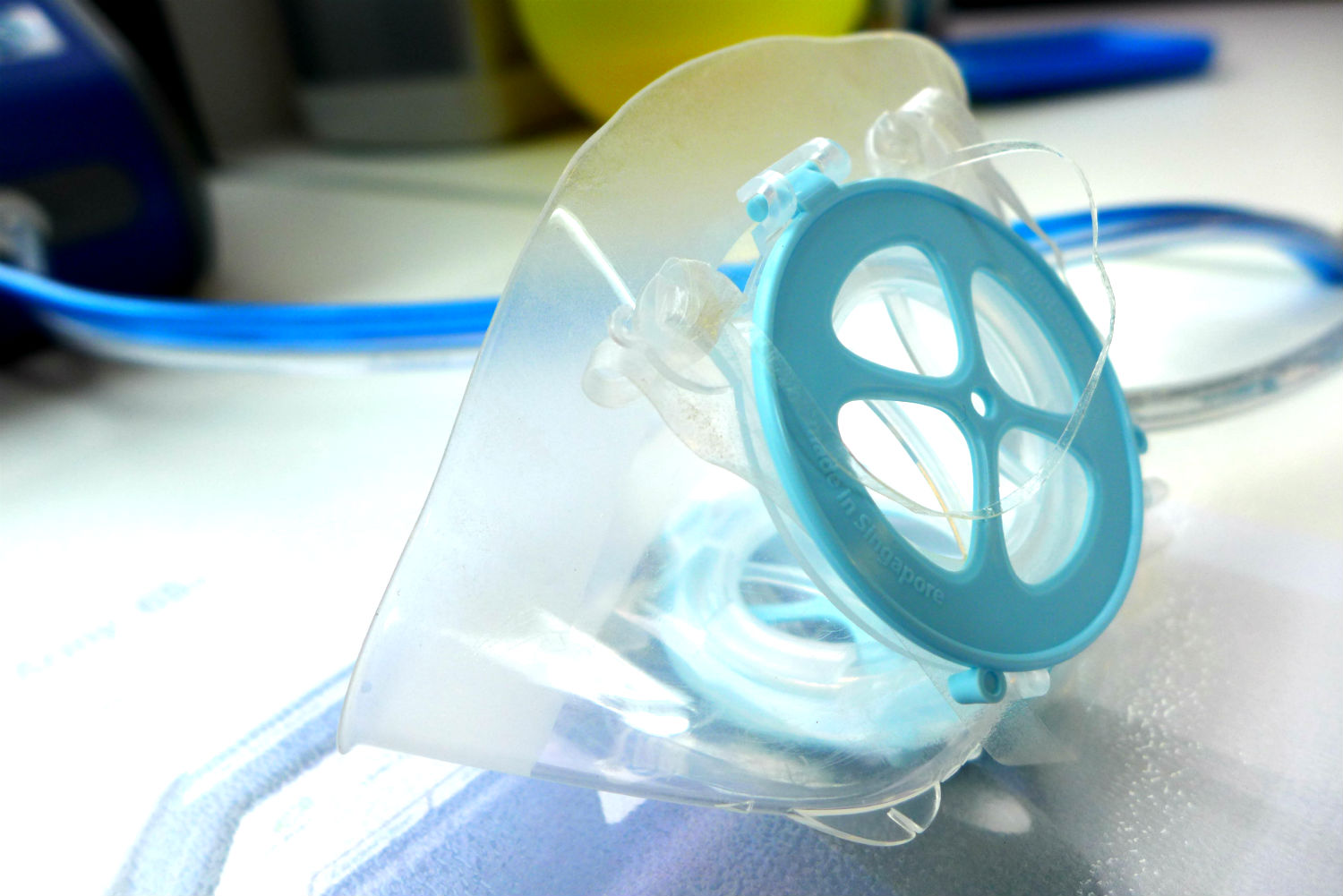
Totobobo mask.
He continued, “We are not talking about high-risk gases or anthrax particles here where even a small amount can be deadly. We are simply talking about anti-pollution and reducing the amount of pollutants breathed into the lungs.”
Chu decided not to have the mask certified
The designer wanted the mask to be importantly, more comfortable and easy to use, so Chu felt that it was not necessary to have the mask certified, unlike most official N95 masks.
Said Chu, “A lot of people buy an N95 mask and they immediately feel that they are protected but it is more than that. N95 gives an assurance that the product is of a certain quality level and that it can be used in hospitals and more harmful environments. But I am just producing my masks on a consumer level and I do not intend for it to become a hospital product. I want to position my mask as the best product out there in the non-certified mask market.”
Tests conducted on the Totobobo masks by the Prince of Wales Hospital in Hong Kong, have revealed that out of every 135 particles, 1 particle will leak into the mask. In comparison, for most certified N95 masks, one particle will leak inside out of every 193 particles. But to pass the N95 certification though, the ratio that is officially needed is 1 out of every 100 particles, according to Chu.
He added, “There are good and bad points to our Totobobo masks. Our mask may not filter particles as well as an N95 mask, but the chance of getting a good fit on the Totobobo mask is higher than a typical N95 mask.”
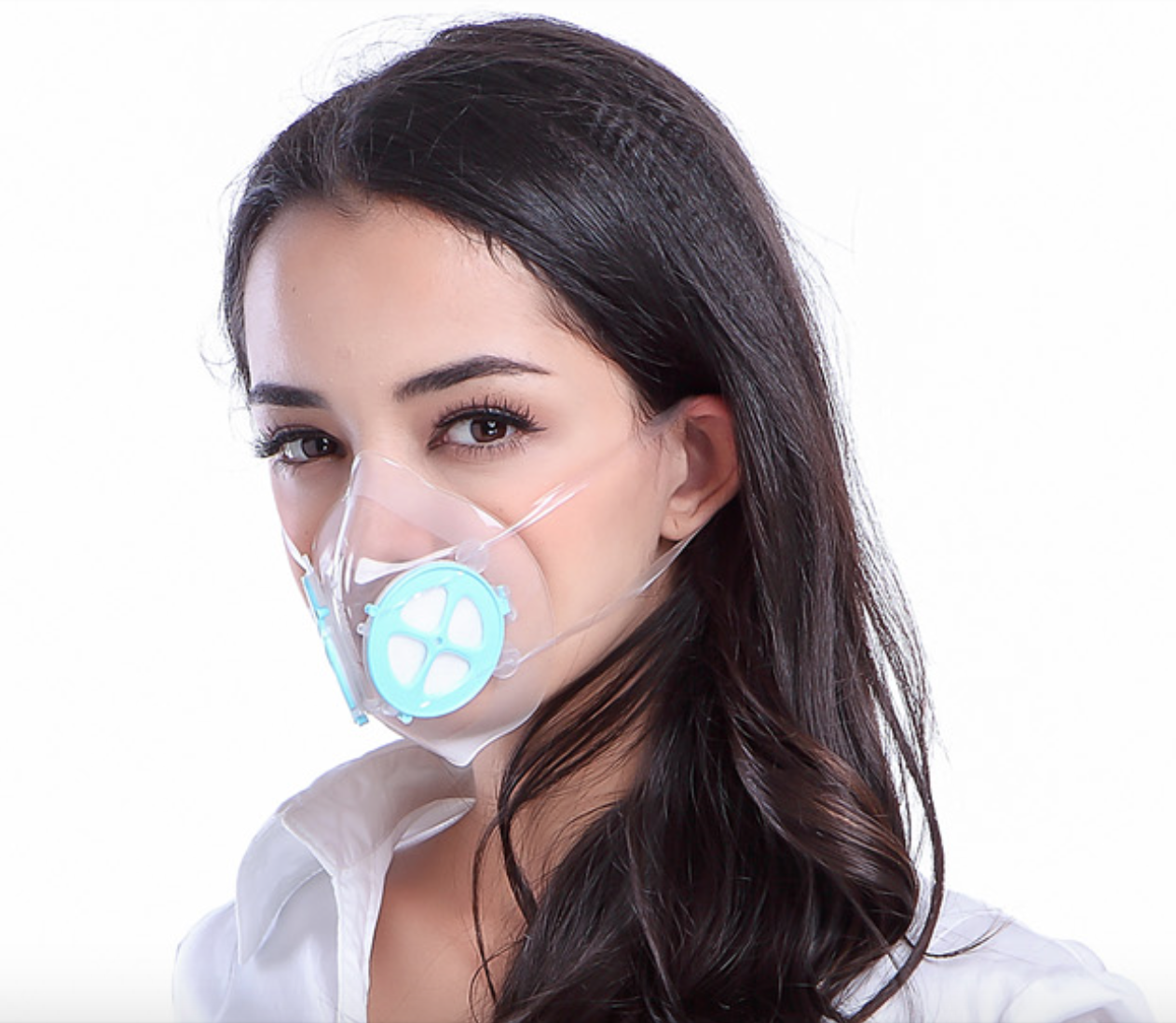
Photo from totobobo.com
Not difficult to get a perfect fit
On purchasing a Totobobo mask, it is not difficult to get a perfect fit, due to a simple watermark fit test method, according to Chu. The process can be time-consuming though. Chu explained, “The mask is designed with a milky texture and when it turns transparent against the skin, it is a positive seal. But you cannot achieve that with an opaque mask. So it is easy to detect where the mask does not fit, by using the naked eye and a mirror. For most people, the problem lies around their nose area.”
He continued, “This material is developed such that I can shape and mould the mask according to my face to get a custom fit. Dipping it into hot water or using a hairdryer will soften the material so that you can pinch it and give it a new shape Then you dip it into cold water to freeze the new shape, which can stay in place for a very long time.”
This is a novel method of testing the fit of a mask because most masks are generally fitted and tested by a quantitative fit test – via using expensive Portacount Respiratory Protector machines – which can each cost more than the combined price of 10 computers. As such, only established hospitals and Army personnel would acquire such machines.
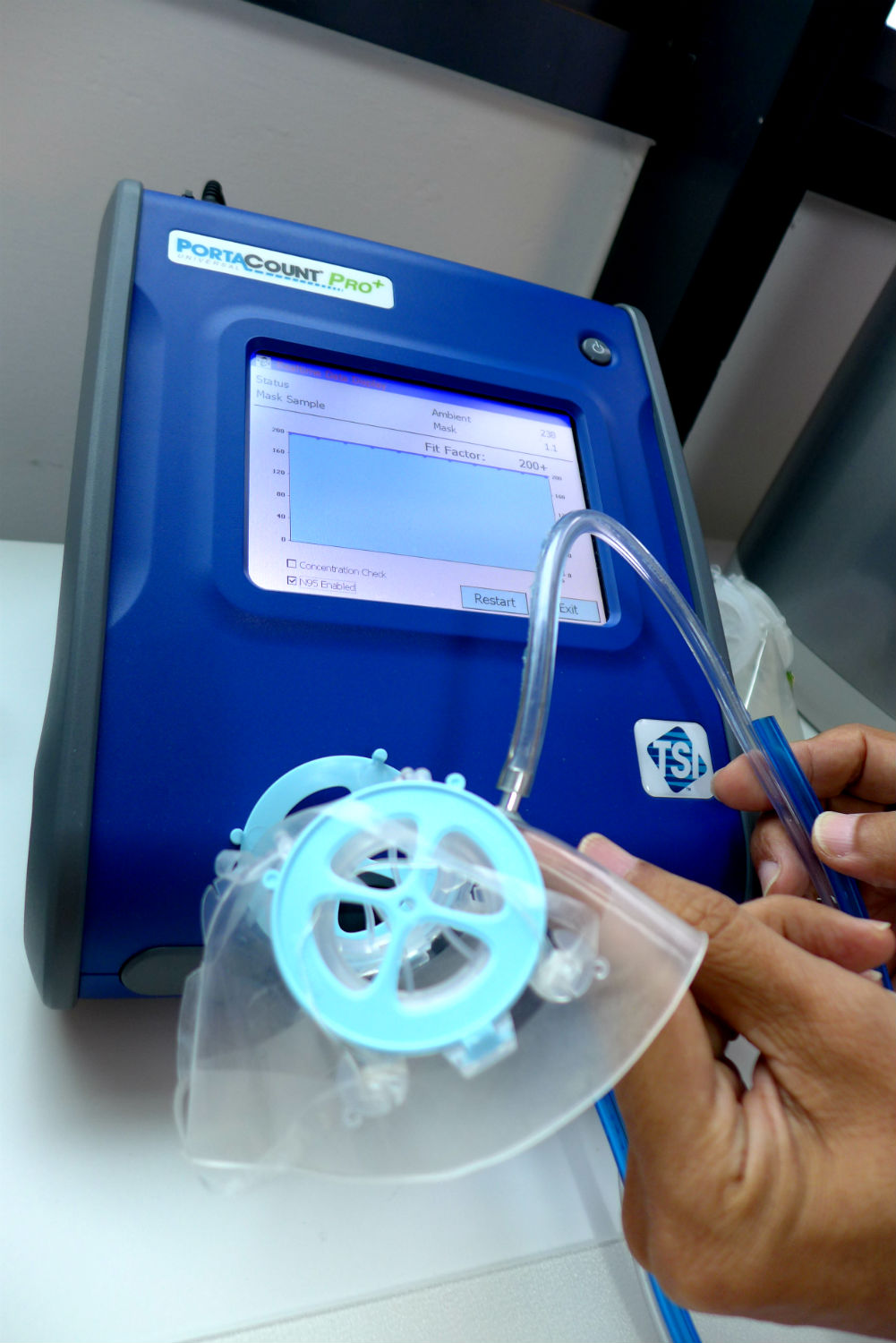
The machine that the mask is connected to, for testing purposes.
However, Chu has one of these machines, and during a demonstration, he tested both my own mask, as well as the Totobobo mask. The results of the Totobobo mask proved to be quite positive – and fitted my face without any major breathing discomforts.
Trigger for designing the mask was during the SARS epidemic in 2003
Chu designed the Totobobo mask in 2003, when the Severe Acute Respiratory Syndrome (SARS) hit Singapore.
Said Chu, “My sons were aged 6 and 7 at the time, and they were so young that I could not find a suitable mask to fit them. So I started to study the N95 masks to find out how they worked. I then began to realise that apart from the mask being good quality, the fit is also crucial. If the fit is not good, the mask cannot have a good effect. Even a moderate gap can totally undo the effects of the best N95 mask.”
The Portacount Respiratory Protector machine @ work.
The masks are re-usable
The Totobobo masks, according to Chu, can be re-used for about two years but the filters in the mask, in Singapore’s hazy conditions, should preferably be changed after two weeks, or when it starts to get black – for most Singaporeans who mainly use the Totobobo mask for commuting and simple outdoor activities. But he recommends changing the filter after about one week for people who have to stay outdoors in highly polluted areas though.
He added that the filters though, can keep for about two years when unopened before the fibres within them start to lose their electrostatic charges. But when the packet is opened, he recommends one year before throwing the package away and purchasing a new one. This is because after opening the package, the air will start to get inside and accelerate the deterioration of the fibres.
The Totobobo masks can be purchased online at http://totobobo.com/buy.html or at Medic Drugstore Pte Ltd (#01-26/27, Tanjong Pagar Plaza). A basic mask will set you back by USD33.
Click here for tips on haze and N95 masks, from Ironman triathlete and oncologist, Dr Joanna Lin.

The versatile anti-pollution masks feature different types of filtration. Hepa-type filtration protects from sub-micron particles such as pollen and so on. You should keep in mind to replace the filter regularly to keep the mask active for reuse.